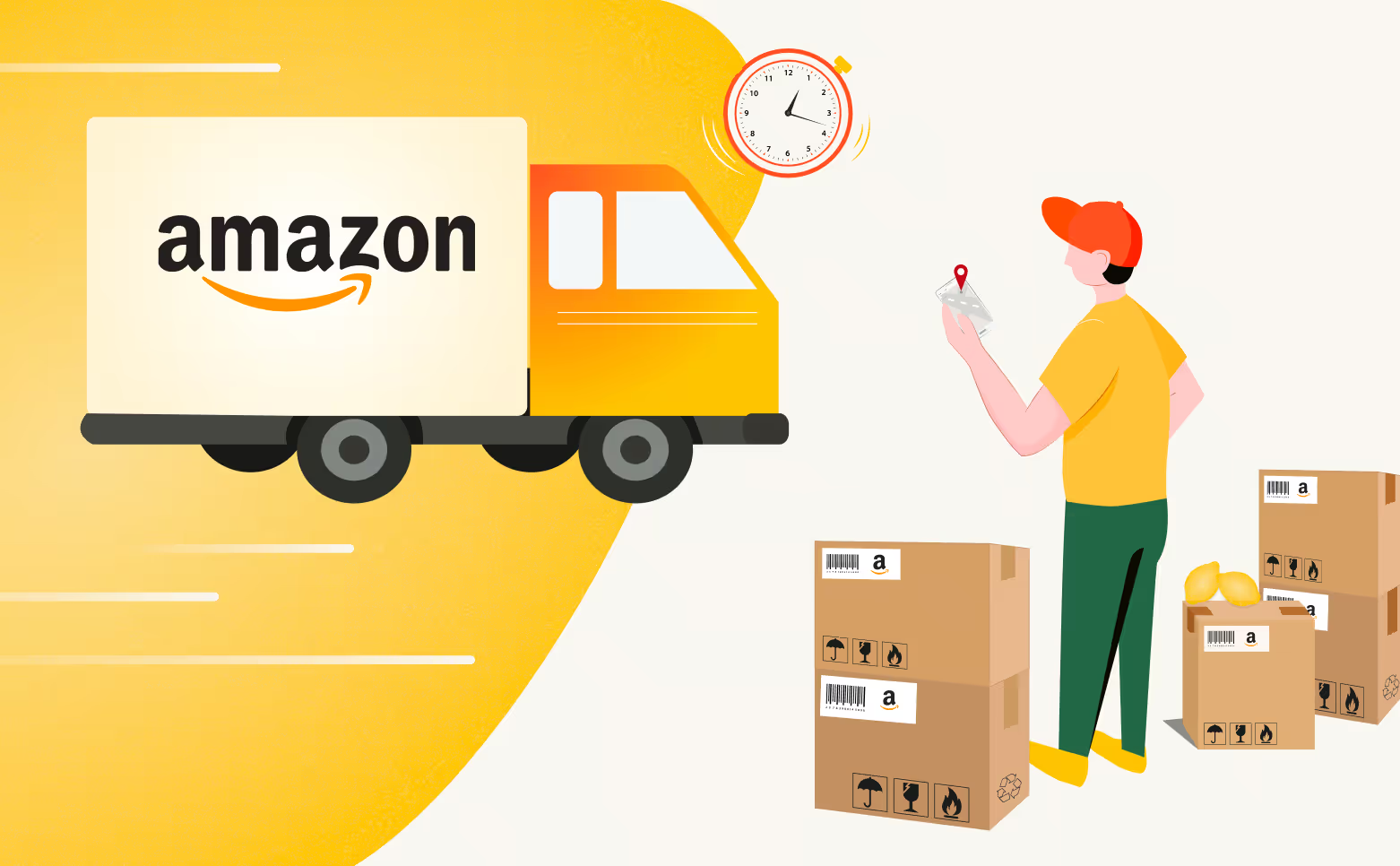How to Manage Your Amazon Returns & Optimise Your Shipping Settings for Success

With Amazon sellers having to live up to the high standards Amazon has set for its customer experiences, it is crucial that they meet strict requirements and deadlines for responding to requests in their returns process.
In this article, we’ll take you through Amazon’s expectations of sellers when it comes to handling returns, the returns process, and how to optimise your shipping settings for selling success.
Managing Returns and Refunds as an Amazon Seller in the UK
Although ideal, it will not always be the reality that your customers decide to keep every product they purchase. Retaining customers who want to make a refund is not impossible. What it boils down to is customer experience. That’s why it is crucial for customers to easily be able to return unwanted items and get a refund to prevent shoppers from filing an Amazon Pay A-to-z Guarantee claim or a chargeback.
Ensuring that your website has a readily available FAQ or Help Page that clearly explains your policies, and explicitly states the steps for shoppers to obtain a refund and return an item, are two ways you can ease your business’ return process.
Customer-friendly policies, such as having a no-restocking-fee policy and providing free returns, can reduce shoppers’ effort, increase their satisfaction, and in turn, massively help to retain shoppers.
Customer Returns Policy
As a third-party seller on Amazon UK, you must meet Amazon’s own return policy for customers who buy directly from them. For the most part, this means that customers have 30 days after the order is delivered to request a return, and they must return the item to you (if you want it returned) within 45 days of receiving it.
Orders shipped between 1 November and 31 December will also have to match Amazon’s Christmas extended returns policy, with all items returnable until 31 January.
Postage for Amazon Returns
When defective and damaged items, or those that are significantly different and misrepresented by the seller, such as the condition or details that affect its value or utility, are returned, the seller is to refund the original shipping costs, and any shipping costs to return the item. However, if the buyer simply decides to return the item within 30 days, the seller refunds the cost of the item and the original shipping costs; they are not required to refund the cost of gift wrapping or cover the cost of return shipping.
Customers who want to return shoes and clothing are entitled to a refund of the return postage costs, whatever the reason for returning them. Any copyable media such as CDs, DVDs and software cannot be returned simply because the buyer has changed their mind.
The Returns Process
When one of your customers wants to return an item, you will receive an email that a return request has been submitted. This will include the buyer’s reason for the return, and Amazon will also tell you if the reason isn’t within Amazon’s returns policy.
You can view your return requests under the Manage Returns section of your seller account. Within this section, there are four actions that you can take, depending on the status of the return request that you’re dealing with: authorise request, close the request, issue refund, and contact buyer.
- Authorise request: Selecting this option means that you are approving the return. Once it’s been authorised, Amazon will send the buyer a non-prepaid Return Merchandise Label.
- Close the request: If you don’t want to accept the return because it isn’t within Amazon’s returns policy, or for any other reason, then you can close the request. As the seller, you will also be able to close the return request at any time. Once you close a request, the buyer is still able to make an A-to-z Guarantee claim.
- Issue refund: If you would like the customer to return the item, Amazon recommends that after you authorise the request, wait until you’ve received it before issuing a refund. If you don’t want the item back, you can issue a refund immediately.
- Contact buyer: You’re able to email customers back once they’ve made a request to find out more about the issue and try to resolve it. You can also use this function to send prepaid labels to buyers if you want to pay for the return.
Avoiding A-z Guarantee Claims
As well as the standard returns process, Amazon also offers customers an A-to-z Guarantee, meaning that they can get their money back if there are any serious issues with their order or the product they receive. This covers cases where:
- The item hasn’t arrived, or it arrived later than the latest estimated date.
- The item is ‘materially different’ from how it was represented on the product detail page. This includes items that are damaged during shipping, defective, misclassified, misrepresented, or have parts missing.
- The customer has returned an item but hasn’t received a refund from the seller.
- The seller has refused to accept a return request that was within Amazon’s return policy terms.
- It is important to note that Amazon requires shoppers to first contact the seller before making an A-z Guarantee claim, giving sellers the opportunity to resolve the issue before it escalates.
Shipping Settings and the Customer Delivery Promise
By the end of this section, you will know how to configure your general shipping settings and recognise how they affect your customer delivery promise.
When shopping on Amazon, a customer sees a specific date range of when a product can be expected to deliver on a product detail page. This date or date range is what we call a customer delivery promise. The customer delivery promise for a product considers handling time, transit time, and a small buffer in case of the unexpected like disruptive weather.
It is important to remember that non-business days, such as weekends and holidays, can also impact handling time. Therefore, configuring your shipping settings can help you meet your customer delivery promises.
Shipping settings are the delivery options you can configure to determine your customer delivery promise. Your shipping settings have two sections: your shipping templates and your general shipping settings.
In this article, we will be focusing of general shipping settings. Read below for a step-by-step on how you can make the most of your settings to ensure smooth shipping.
- In seller central, click the gear icon to head to settings in the upper right corner.
- Click shipping settings. You will be presented with two tabs; the ‘General Shipping Settings’ tab and the ‘Shipping Templates’ tab.
- By clicking the ‘General Shipping Settings’ tab, you can review and edit your shipping information, such as your default shipping address, order fulfilment settings, handling time, and holiday shipping schedules.
- Under default shipping address, you can set the primary physical location you use for shipping orders.
- Under fulfilment settings, you can configure your general fulfilment settings, as well as settings for shipping region automation. You can tailor your cut-off time settings either by day of the week or by carrier.
- You can also adjust settings for weekend operations and deliveries. Adjusting your weekend delivery settings can help shorten your customer delivery promise. If your business is open late and if the carriers you use, ship products on weekends, under the handling time section, you can set your default handling time for your account to either one or two days. This will be the number of days you have to package and hand your products over to your carrier. This will apply to all your products unless you set an ASIN-specific handling time for that product. You can also set an order handling capacity which is the number of orders you can manage per day within your default handling time. Any order above this limit will receive one more day of handling time without being considered a late shipment.
- In the holidays section, you can see which days Amazon considers holiday. These won’t count as operating days unless you decide to enable them.
- Make sure to return to the shipping settings page to review and update your settings as needed.
If you would like further guidance on returns as an Amazon seller, please feel free to get in touch and we can support you through the process.



